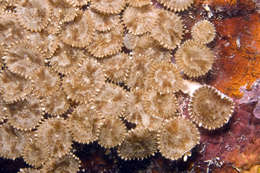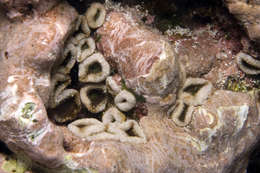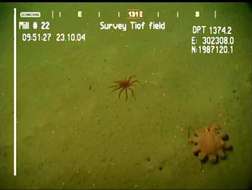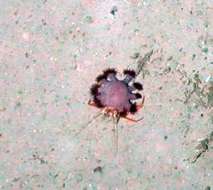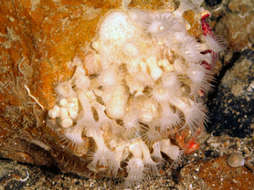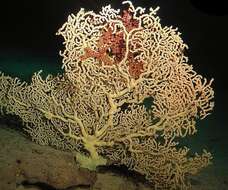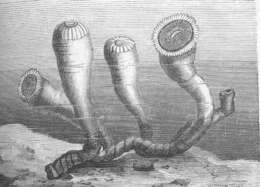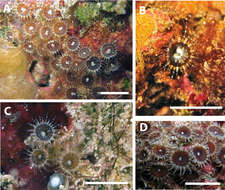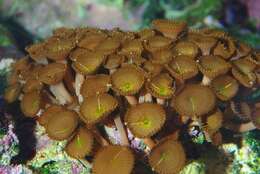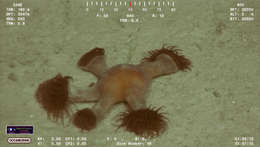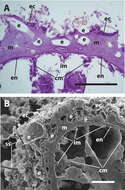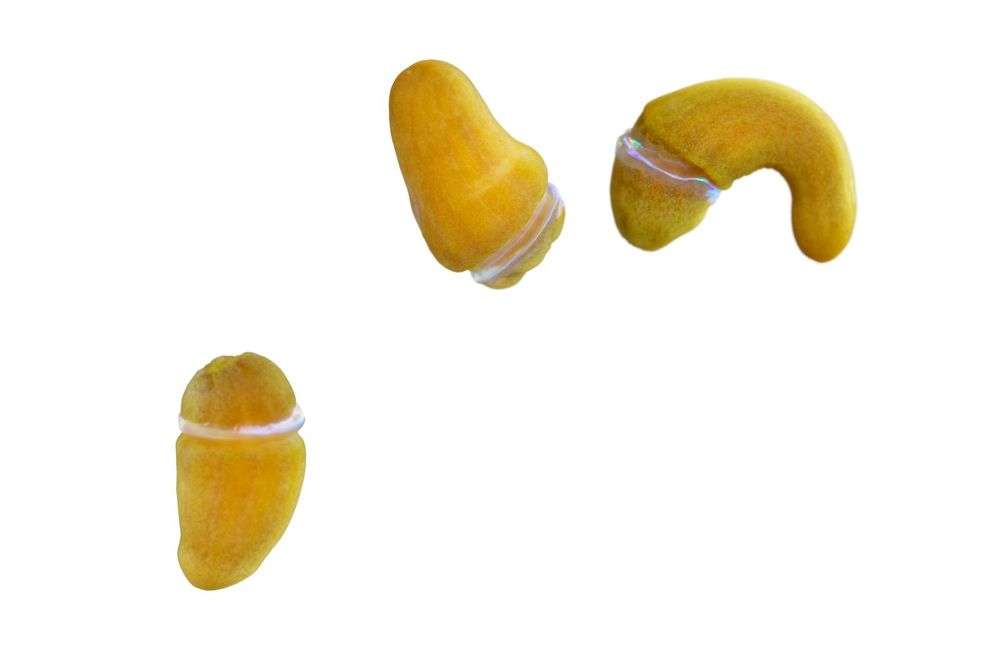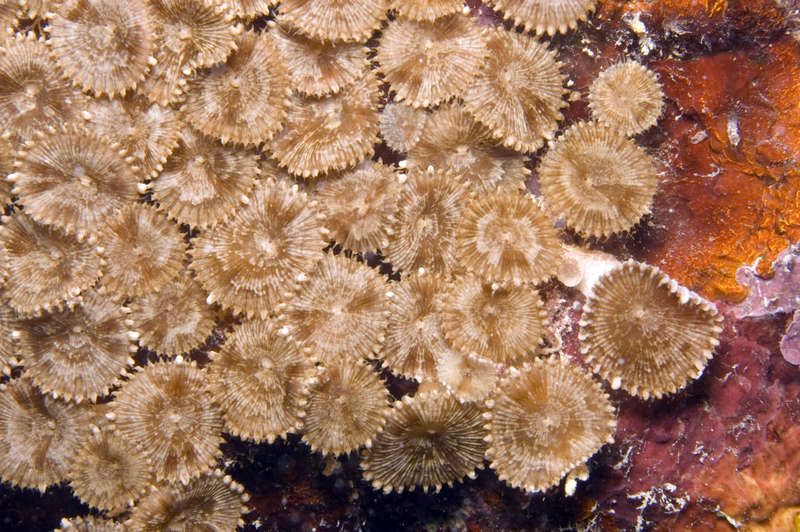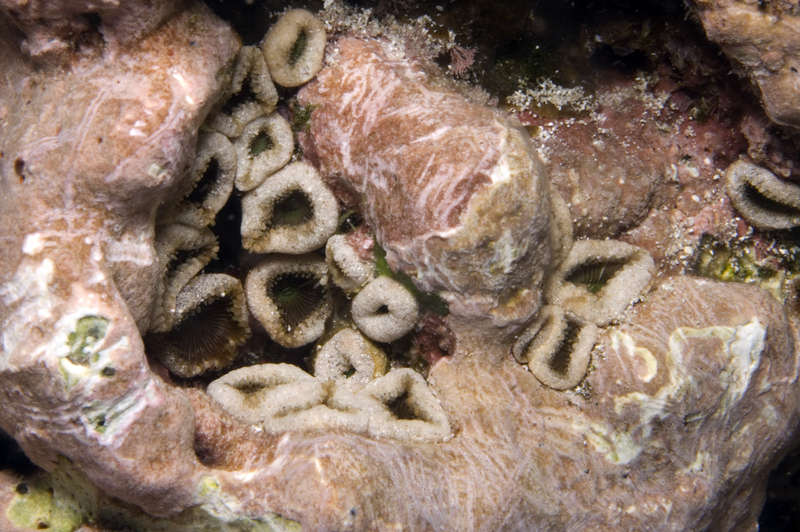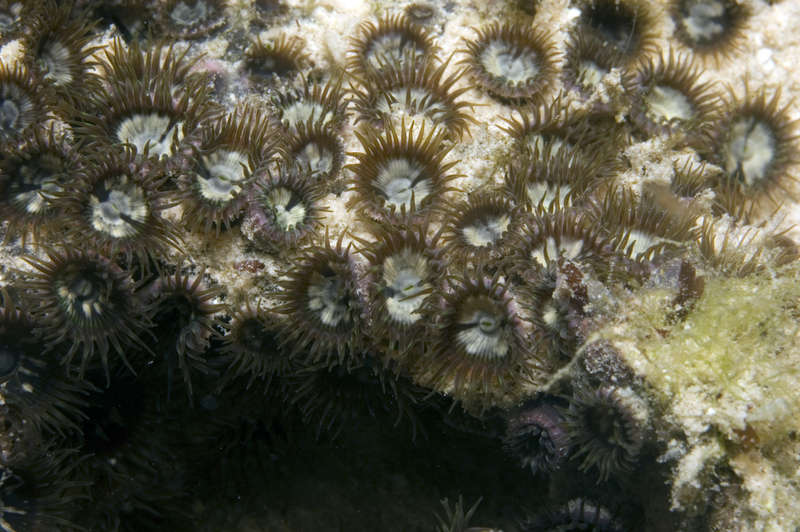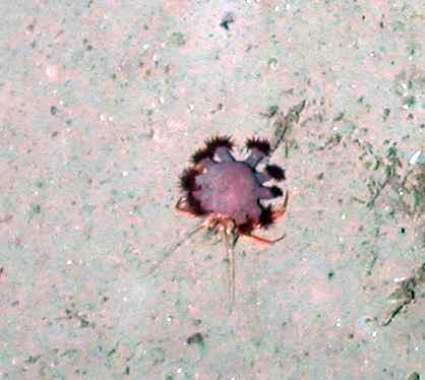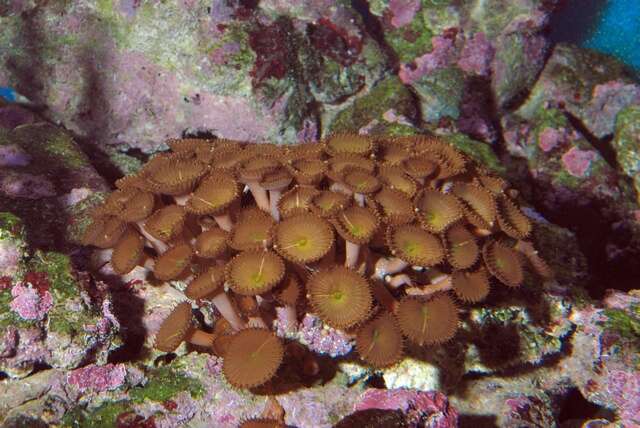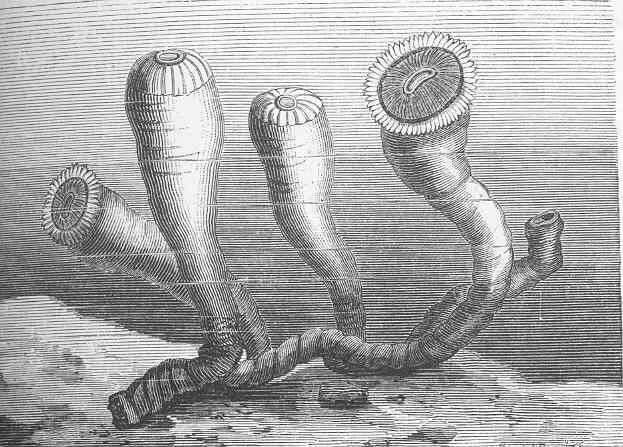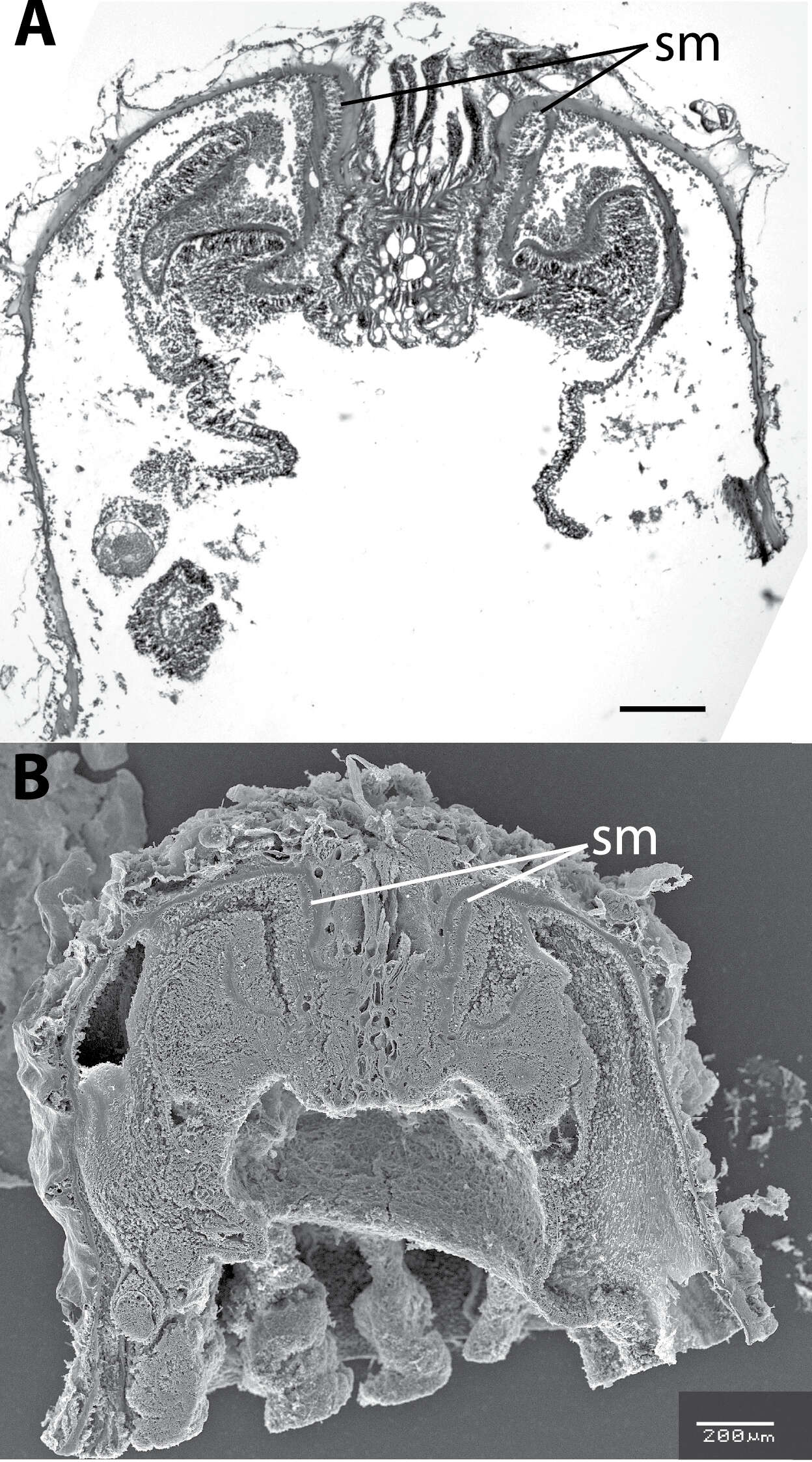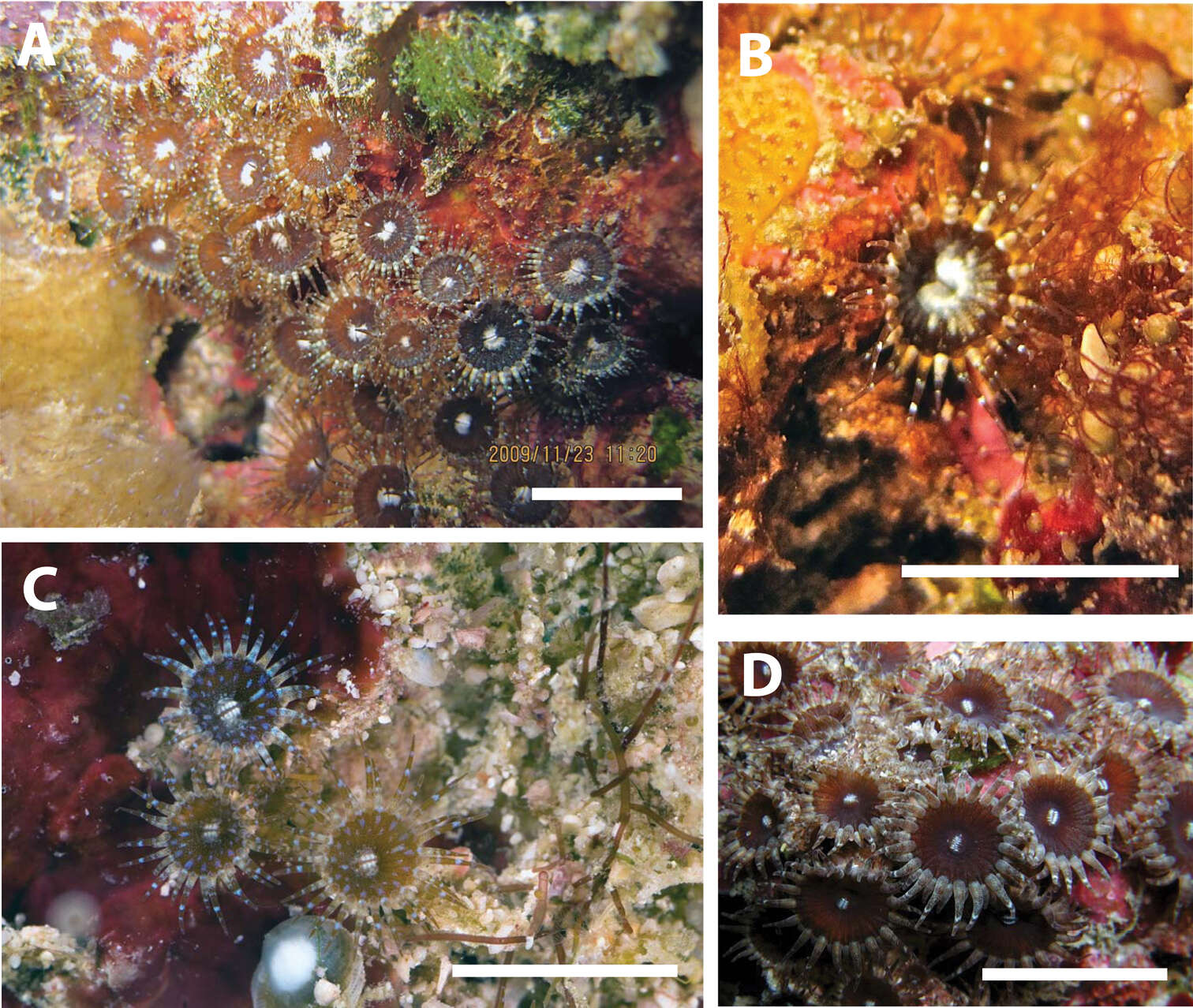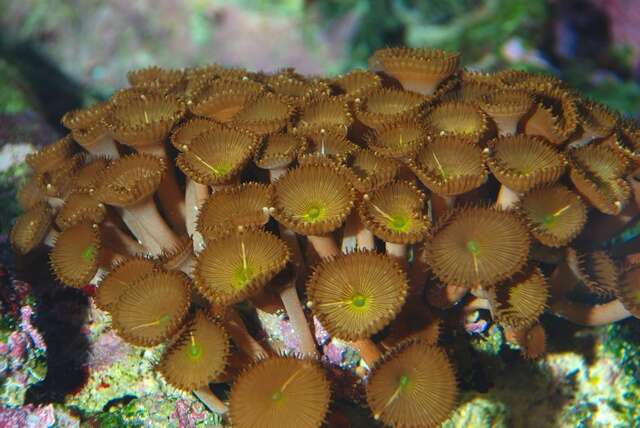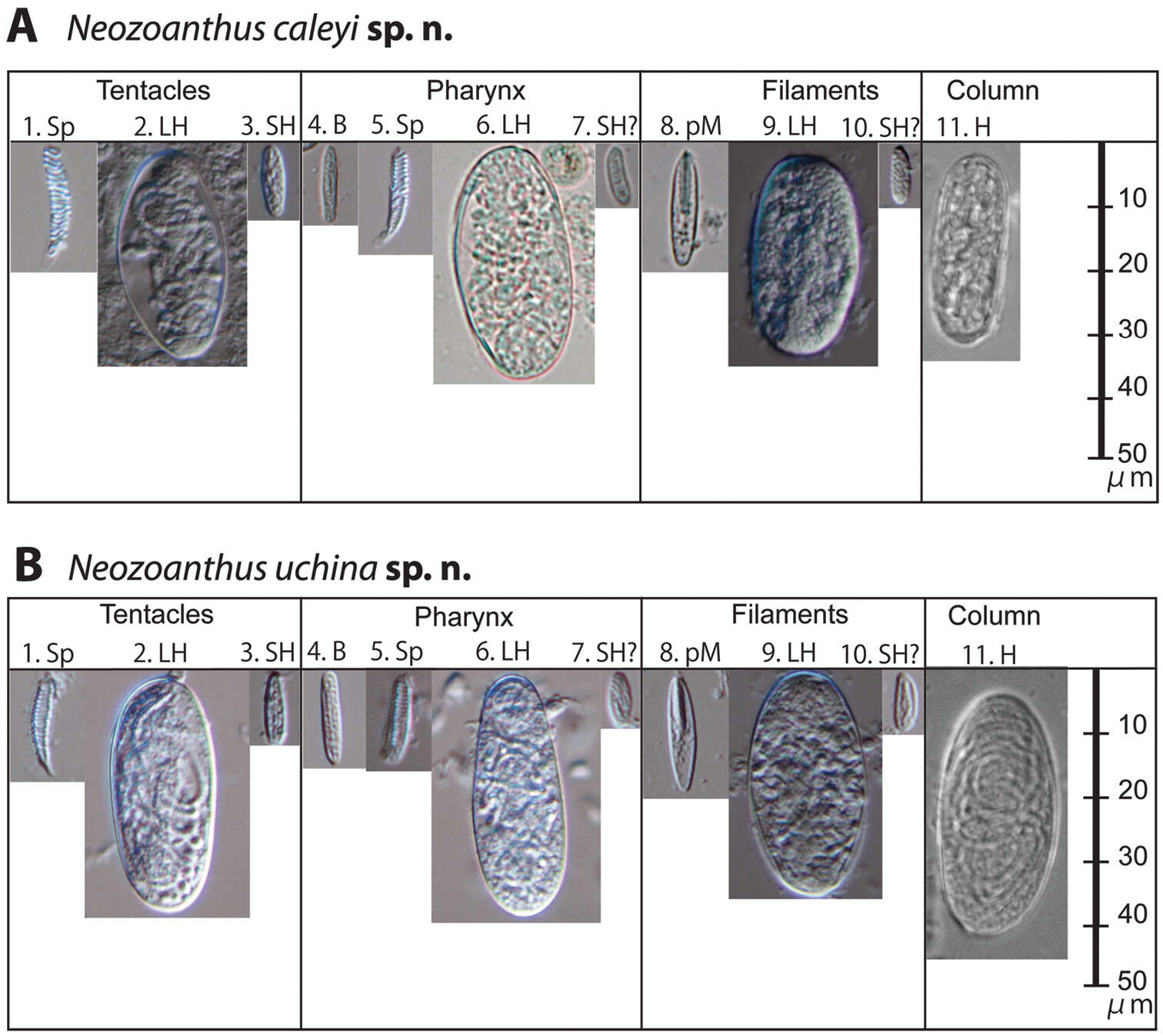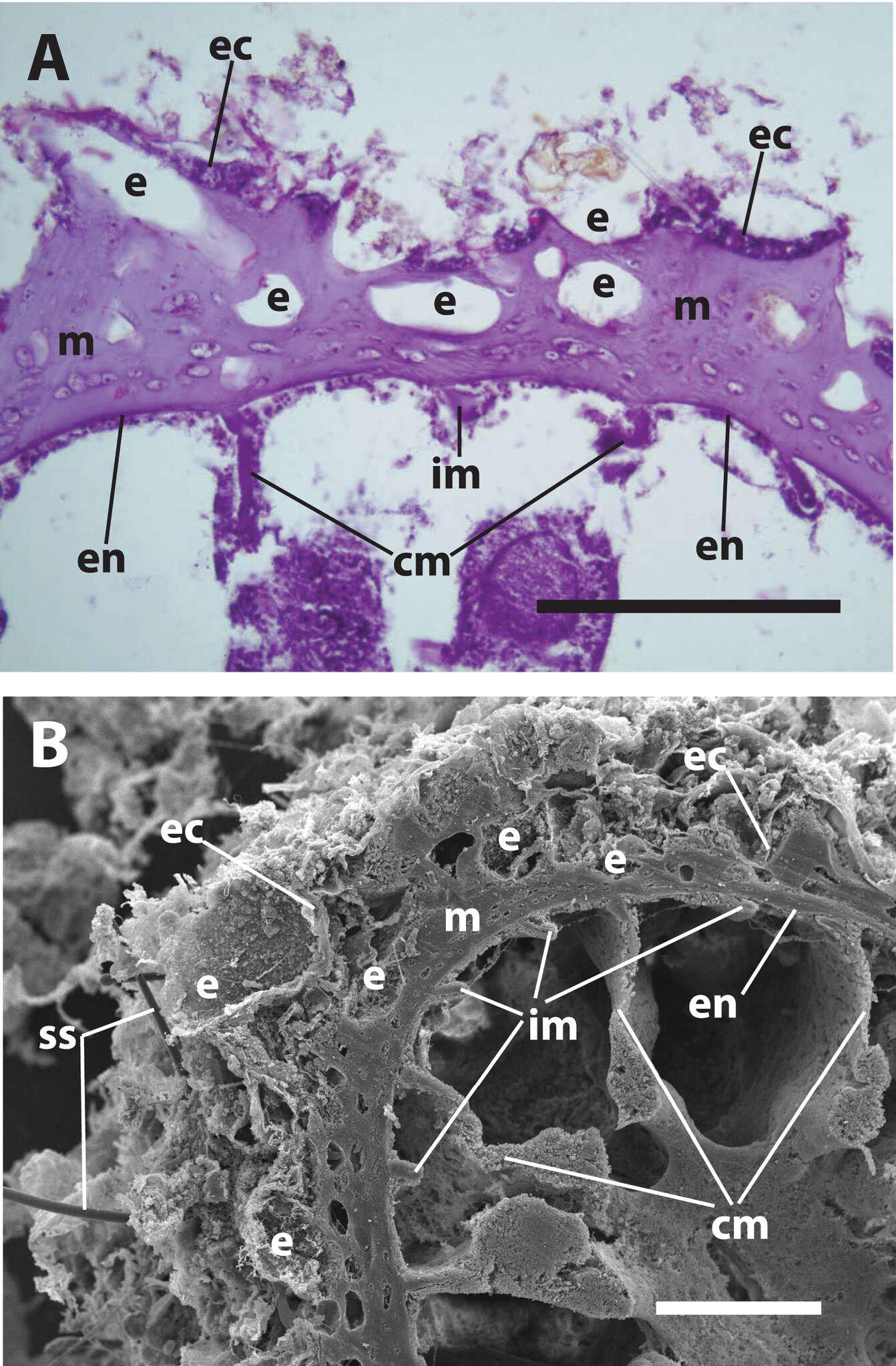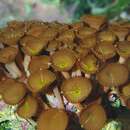-
All Biocode files are based on field identifications to the best of the researcher’s ability at the time.
-
All Biocode files are based on field identifications to the best of the researcher’s ability at the time.
-
All Biocode files are based on field identifications to the best of the researcher’s ability at the time.
-
All Biocode files are based on field identifications to the best of the researcher’s ability at the time.
-
Description: Hermit crab from Mauritania. One species with zoanthid found in this area. Item Type: Image Title: Hermit crab (Parapagurus pilosimanus) with zoanthid on back(Epizoanthus paguriphilus) at lower right of image. Probable Edwardsid anemone in centre. Species: Parapagurus pilosimanus, Epizoanthus paguriphilus Behaviour: On seabed, moving. Site: Atlantic -- Northern Tropical Atlantic -- Tiof Site Description: Seafloor Depth (m): 1374 Latitude: 17 deg 57' 47" N Longitude: 16 deg 52' 00" W Countries: West Africa -- Mauritania Rig: Boa Deep C Project Partners: Woodside, Oceaneering ROV: Millenium 22 Deposited By: Dr Daniel Jones Deposited On: 29 January 2010
-
Description: Digital still collected as part of CODEMAP Item Type: Image Title: Epizoanthus paguriphilus Copyright: CODEMAP Species: Epizoanthus paguriphilus Site: Atlantic -- Celtic Site Description: Seafloor Depth (m): -1049.77 Latitude: 48 deg 52' 08" N Longitude: 11 deg 06' 47" W Countries: UK -- Whittard Canyon Habitat: Submarine Canyon Rig: RRS James Cook ROV: ISIS Deposited By: Ms Katleen Robert Deposited On: 13 September 2013
-
Description: A colonial anemone in which the polyps are connected by one encrusting base. Seen here covering the side of a rock at Cashel. Item Type: Image Title: Parazoanthus (anguicomus?) Copyright: SERPENT Project Species: Parazoanthus anguicomus Site: Atlantic -- Irish Shelf -- Cashel Site Description: Seafloor Depth (m): 174 Latitude: 54 deg 42' 23" N Longitude: 10 deg 26' 20" W Countries: Republic of Ireland Habitat: Benthic Rig: Ocean Vanguard Project Partners: Statoil, Oceaneering, Diamond Offshore ROV: Magnum 085 Deposited By: Dr Andrew Gates Deposited On: 15 December 2009
-
South Pacific Ocean, Duration 6 seconds
-
South Pacific Ocean, Duration 6 seconds
-
South Pacific Ocean, Shot at night, Duration 17 seconds
-
South Pacific Ocean, Duration 10 seconds
-
Århus, Jylland, Danmark
-
Phylogenetic tree of the Hawaiian gold coral (Ku. haumeaae) and related zoanthids.Bayesian tree based on concatenated 18S, COI and 16S genes. Values at the nodes represent posterior probabilities and bootstrap values respectively. “S” indicate the ability to secrete a skeleton. Values below posterior probabilities of 0.5 or 50% bootstrap were considered as unresolved. Hawaiian zoanthids described here are indicated in bold. Epizoanthidae are used as outgroup. Vertical bars indicate the species belonging to Epizoanthidae and Parazoanthidae respectively.doi:10.1371/journal.pone.0052607.g004From Sinniger F, Ocaña OV, Baco AR (2013) Diversity of Zoanthids (Anthozoa: Hexacorallia) on Hawaiian Seamounts: Description of the Hawaiian Gold Coral and Additional Zoanthids. PLoS ONE 8(1): e52607. doi:10.1371/journal.pone.0052607 Retrieved from:
http://www.plosone.org/article/info%3Adoi%2F10.1371%2Fjournal.pone.0052607
-
Frederic Sinniger, Oscar V. Ocaña and Amy R. Baco
EOL staff
Kulamanamana haumeaaeKulamanamana haumeaae on Hawaiian sea mountThis work is licensed under the
Creative Commons Attribution 2.5 License. Attribution: Sinniger F, Ocaña OV, Baco AR (2013), Diversity of Zoanthids (Anthozoa: Hexacorallia) on Hawaiian Seamounts: Description of the Hawaiian Gold Coral and Additional Zoanthids. PLoS ONE 8(1): e52607. doi:10.1371/journal.pone.0052607
-
Zoanthus socialis (Cuvier).
-
James Davis Reimer, Yuka Irei, Takuma Fujii
Zookeys
Figure 2.Longitudinal section of Neozoanthus caleyi sp. n. specimen HI225 showing endodermal sphincter muscle (=sm). A Light microscope B scanning electron microscope. Both scales =200 µm.
-
James Davis Reimer, Yuka Irei, Takuma Fujii
Zookeys
Figure 3.Neozoanthus caleyi sp. n. in situ around Heron Island on the Great Barrier Reef, Queensland, Australia. A Specimen HI214 at Sykes Reef, depth=9 m, November 23, 2009 B Close-up of a single polyp showing yellow coloration at base of tentacles; specimen HI145 at Sykes Reef, depth=18 m, November 18, 2009 C Specimen HI231 at Heron Channel, depth=23 m, November 24, 2009 D Uncollected specimen at Heron Channel, depth=approximately 20 m, November 2011. Scales approximately 1 cm. A, B taken by JD Reimer, C, D taken by Gary Cranitch.
-
Århus, Jylland, Danmark
-
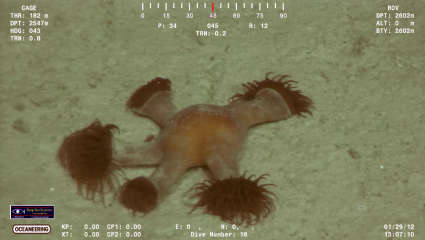
Description: These hermit crabs are of the Parapaguridae with anemones on the shells.
Given the depth, the hermits in these photos are almost certainly of the genus Parapagurus. The differences between species are often quite subtle, so it is impossible to say for certain which species are shown.
There are 4 species of Parapagurus reported from this area. They are likely either P. bouvieri or P. andreui, or perhaps even both species. Both associate with Epizoanthus spp., but they can occasionally be found in shells where the coelenterate is not as well developed and only partially covers the housing.
P. pilosimanus is found only in the Atlantic (both sides), and so far have not seen any from the Indian Ocean. Item Type: Image Title: Hermit crab and anemone Copyright: SERPENT Species: Parapagurus sp., Epizoanthus sp. Behaviour: The anemone, Epizoanthus sp. is on the shell of the hermit crab Parapagurus sp. Site: Indian -- Indian Ocean -- East Africa -- Zafarani Depth (m): 2601 Countries: East Africa -- Tanzania Habitat: Benthic Rig: Ocean Rig Poseidon Project Partners: Statoil, Oceaneering ROV: Millenium 93 and 73 Deposited By: Dr Andrew Gates Deposited On: 25 April 2012
-
South Pacific Ocean, Duration 10 seconds
-
James Davis Reimer, Yuka Irei, Takuma Fujii
Zookeys
Figure 5.Cnidae of Neozoanthus caleyi sp. n. and Neozoanthus uchina sp. n. from the tentacles, pharynx, and filaments showing their relative size. Type abbreviations: Sp=spirocysts, H=holotrichs, LH=large holotrichs, SH=small holotrichs, B=basitrichs, SH?=potential small holotrichs, pM=p-mastigophores. Size and frequency data are given in Table S1.
-

Description: These hermit crabs are of the Parapaguridae with anemones on the shells.
Given the depth, the hermits in these photos are almost certainly of the genus Parapagurus. The differences between species are often quite subtle, so it is impossible to say for certain which species are shown.
There are 4 species of Parapagurus reported from this area. They are likely either P. bouvieri or P. andreui, or perhaps even both species. Both associate with Epizoanthus spp., but they can occasionally be found in shells where the coelenterate is not as well developed and only partially covers the housing.
P. pilosimanus is found only in the Atlantic (both sides), and so far have not seen any from the Indian Ocean. Item Type: Image Title: Hermit crab and anemone Copyright: SERPENT Species: Parapagurus sp., Epizoanthus sp. Behaviour: The anemone, Epizoanthus sp. is on the shell of the hermit crab Parapagurus sp. Site: Indian -- Indian Ocean -- East Africa -- Zafarani Depth (m): 2601 Countries: East Africa -- Tanzania Habitat: Benthic Rig: Ocean Rig Poseidon Project Partners: Statoil, Oceaneering ROV: Millenium 93 and 73 Deposited By: Dr Andrew Gates Deposited On: 25 April 2012
-
South Pacific Ocean, Duration 10 seconds
-
James Davis Reimer, Yuka Irei, Takuma Fujii
Zookeys
Figure 1.Internal structure of Neozoanthus uchina sp. n. showing encrustation in outer mesoglea and ectoderm, characteristic of Neozoanthus spp., with irregularly-sized encrustation A light microscope histological cross-section, and B scanning electron microscope image. Both images of specimen RMNH Coel 40098 (Table 2). Abbreviations: cm=complete mesenteries, e= sand/detritus encrustation (in B) or where encrustation existed before decalcification (in A), im=incomplete mesenteries, ec=ectoderm, en=endoderm, m=mesoglea, ss=encrusted sponge spicules. Scales: A=100 µm, B=200 µm.


